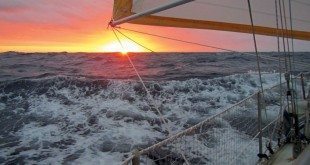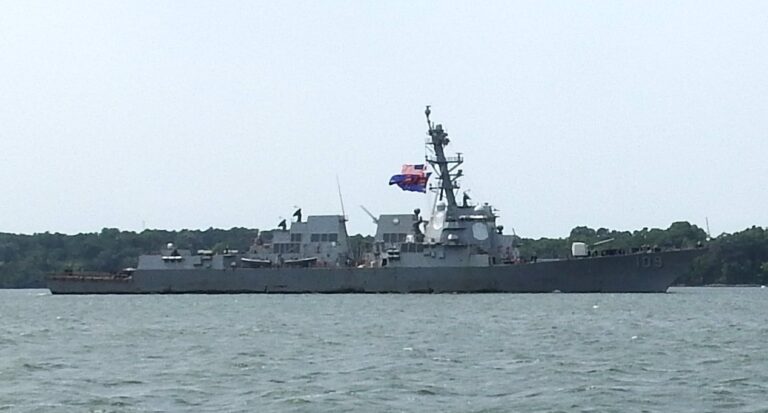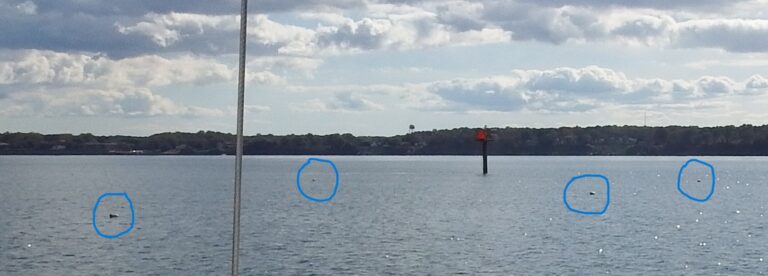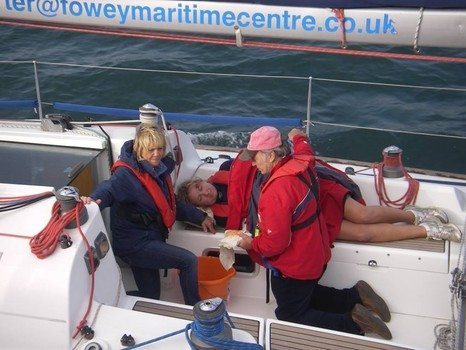
You’ve no doubt seen images of the US Coast Guard rapelling down a line from an MH-60 helicopter to scoop someone from the water. There are two methods of rescue, and one of them could be fatal.
That was among the revelations of an all-day seminar in Annapolis on “Medical Emergencies at Sea: Beyond First Aid.” Dr. Samuel S. Lyness, who’s also a USCG 50-ton captain and offshore sailboat racer, advised an elite class of the Chesapeake Area Professional Captains Association on what to do when we’re a thousand miles offshore and something goes wrong. Dr. Lyness is a retired neurosurgeon from Philadelphia who has also worked in US Army hospitals stateside and in war zones.
 The sea rescue came up in his section on hypothermia, which I always thought was defined as how long you could last in cold water. “It doesn’t have to be cold, just prolonged,” he said. “Anyone submerged but afloat in any ocean of the world in any season will die of hypothermia, even water as warm as 84 degrees.” It isn’t just the coldness, but the length of time the water saps one’s temperature down from 98 degrees.
The sea rescue came up in his section on hypothermia, which I always thought was defined as how long you could last in cold water. “It doesn’t have to be cold, just prolonged,” he said. “Anyone submerged but afloat in any ocean of the world in any season will die of hypothermia, even water as warm as 84 degrees.” It isn’t just the coldness, but the length of time the water saps one’s temperature down from 98 degrees.
The correct strategy for the victim is to preserve his strength and energy. “Water conducts heat away two times faster than air does at the same temperature. So swimming or vigorous action in the water to stay afloat adds convection loss to conduction loss. You think you’re flaying your arms to stay warm, but just the opposite happens.”
Hypothermia evolves over four stages. The first is the cold water shock that can last up to a minute. The second is incapacitation in which you have only 10 minutes for self-rescue. The third stage is called “core body” hypothermia, which the layman perceives as so many hours to survive depending on the water temperature. The last stage is called “circum rescue collapse,” where the fight-or-flight adrenalin rush dissipates because we perceive finally being saved. We give up because we’re rescued, but that’s really dicey.
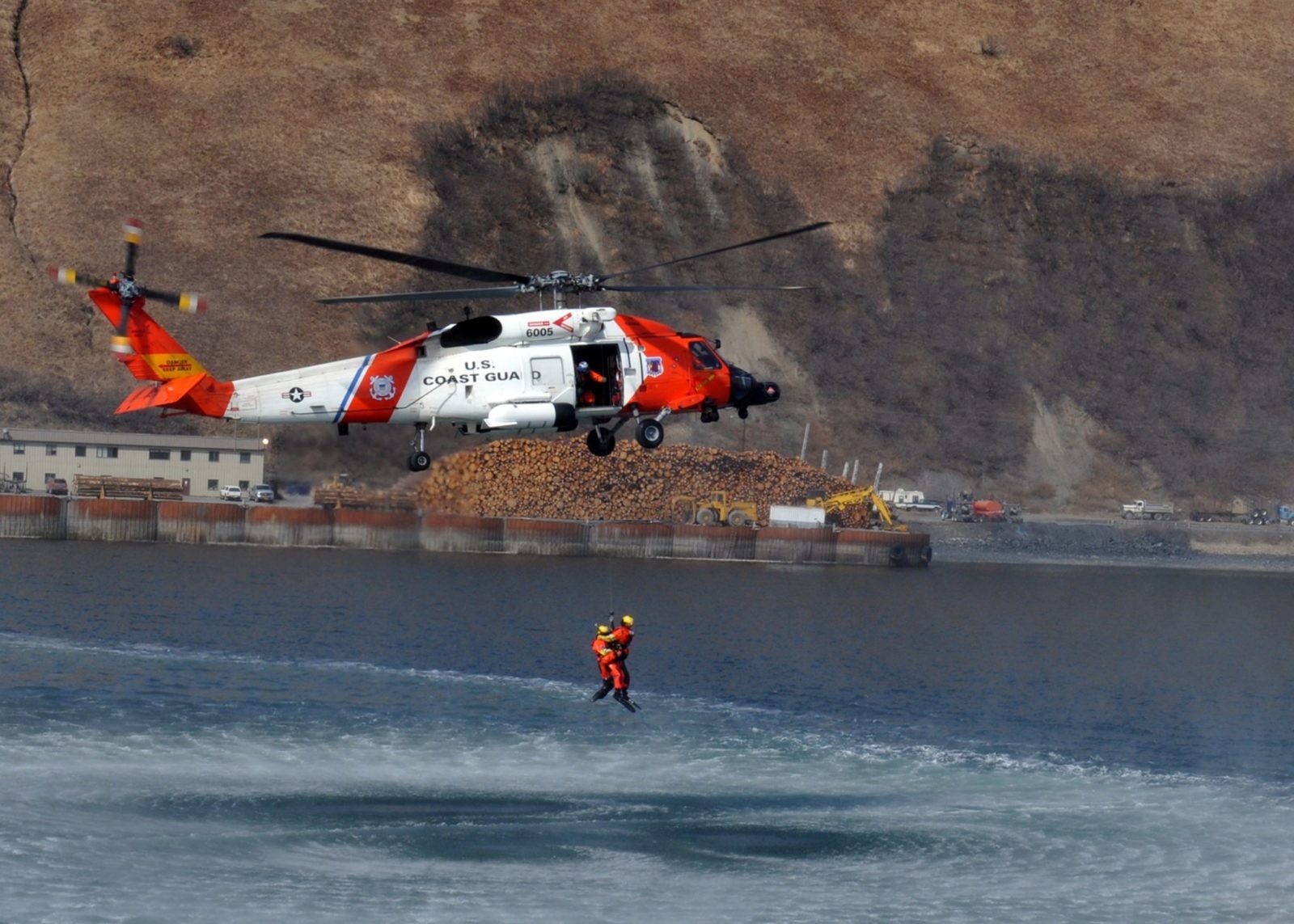 “The Coast Guard would find someone in the water and drop a diver down to rescue them by putting a harness around their torso and bring them up by the shoulders. All too frequently, the victim who was alive in the water actually died by the time he got pulled into the helicopter. What happened was that the blood shifted enough from his head and torso into his legs to deplete his brain and heart for a few minutes. Even losing consciousness won’t kill you in this situation. It’s the heart stopping. Today the correct procedure is to lower a rescue basket and lift the patient horizontally.”
“The Coast Guard would find someone in the water and drop a diver down to rescue them by putting a harness around their torso and bring them up by the shoulders. All too frequently, the victim who was alive in the water actually died by the time he got pulled into the helicopter. What happened was that the blood shifted enough from his head and torso into his legs to deplete his brain and heart for a few minutes. Even losing consciousness won’t kill you in this situation. It’s the heart stopping. Today the correct procedure is to lower a rescue basket and lift the patient horizontally.”
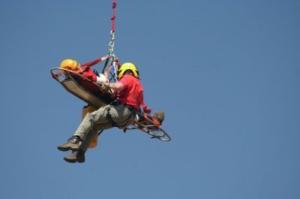 I asked if such a rescue was universal or for extended immersion, and he said the latter. “You don’t need to worry about that in a quick man-overboard situation. Just pull them out.”
I asked if such a rescue was universal or for extended immersion, and he said the latter. “You don’t need to worry about that in a quick man-overboard situation. Just pull them out.”
We got through the entire day without any mention of Robert Redford’s movie, “Lost at Sea.” Why was that? Because his problems were largely mechanical or tactical, not medical.
At the end of the seminar, someone asked Dr. Lyness if there was anyone he would refuse to take sailing offshore. He spoke eloquently of a friend who was obese and had a heart condition. He had to refuse to take him on a routine ship delivery along the East Coast. Both men were crestfallen. “And I used to say I wouldn’t take anyone over 80,” he brightened, “but that won’t work since I turn 83 next month.” He thought for a moment and added, “I definitely would not take anyone with a bad personality.”
Me too. That’s about the only thing the seminar had in common with Let’s Go Sail, since our cruises are all conducted on the placid York River. The only rescues we see are training exercises by the USCG Training Center at Yortown.
Let’s go sail. The season is now open for sailing on warm sunny days. To see the rates and reserve a date for a sailboat charter, click here. To check out reviews from sailors, click here. To become a crew member on a charter sail or to tell us your sailing story, click here.
